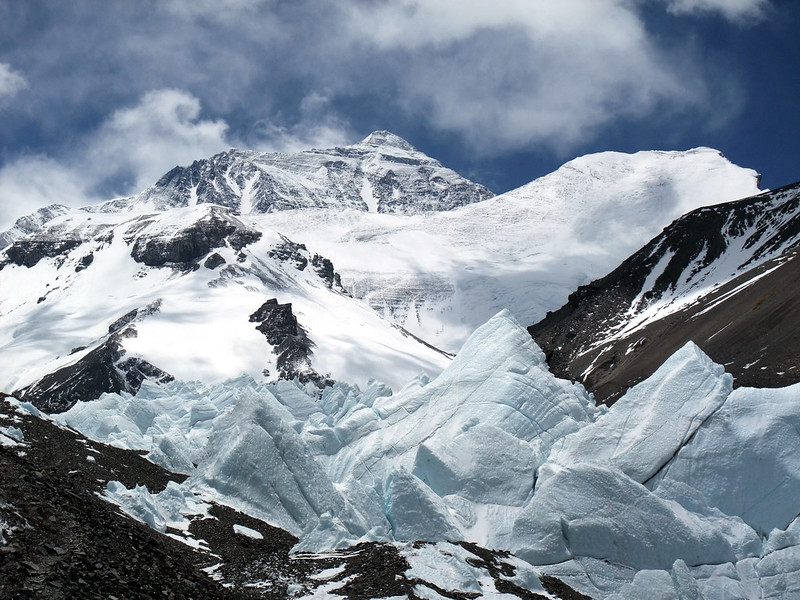
Ice pinnacles on the East Rongbuk Glacier with Mount Everest (also known by its Tibetan name Qomolangma or Nepali Sagarmatha) in the background.
Credit: Mark Horrell CC BY-NC-SA 2.0
AGU News
AGU announces Kristen Averyt, Ph.D., as new EVP, Science
Averyt joins AGU from the Executive Office of the President, Council on Environmental Quality, where she served as Director for Drought and Western Resilience. [press release]
Astrobiology Science Conference 2024 – this week!
Check out a new commentary revisiting the potential for life on Saturn’s icy moon Enceladus and related meeting sessions presented or chaired by the authors:
- Enceladus: Astrobiology revisited [JGR Biogeosciences][research spotlight]
- Biosignatures, chance and necessity in biochemistry [talk ]
- Pre-life chemistry on ocean worlds [session Friday 10 May]
- More about our solar system’s icy worlds [tips]
- Europa Clipper preview press panel [YouTube]
Press registration remains open through Friday, 10 May and grants access to session recordings viewable after the conference ends. To register, email [email protected] with your credentials. [media advisory and tips]
Solar Storms
Large geomagnetic storms are forecast for the weekend, emerging from a sunspot rivaling the source of the famous 1859 Carrington Event. Here’s some of the latest AGU science on space weather impacts:
- Airline crew radiation exposure should be individually monitored [Space Weather research]
- Scientists track down elusive record of strongest observed solar flare [Geophysical Research Letters research]
- Starlink and other low orbiting satellites vulnerable to moderate geomagnetic storms [Space Weather research]
Featured Research
Moisture trains deliver big snow to Antarctic ice sheet interiors
Spaceborne radar shows moisture arriving in atmospheric river-like systems at the southern continent, followed by extraordinary snowfall events over the Amundsen Sea, Ice Shelf and deep into the interior of the ice sheet. [JGR Atmospheres research]
Meltwater from Everest’s East Rongbuk climbing route will peak by 2060
Climbers on Everest’s northeast ridge route from Tibet follow the East Rongbuk Glacier to Camp 1 at the North Col. Researchers picked the relatively well-measured East Rongbuk to improve modeling of ice dynamics and predictions of future change for glacier “water towers” that supply critical water needs for mountain communities. The glacier will continually lose mass this century, the study found, with annual meltwater volume peaking around 2060 if high greenhouse gas emissions continue. [Earth’s Future research]
Can ice melt on the surface of present-day Mars?
Unlikely, according to new research that applies recent advances in modeling turbulent air flow on Earth to the Red Planet to estimate how fast ice sublimates to gas on the cold surface — and if any conditions would allow for liquid water. The model has applications to simulating surface conditions on earth Earth, Titan, or exoplanets. [JGR Planets research]
How mantle movements shape Earth’s surface
Two new data sets help researchers tease apart the influences of plate tectonics and mantle movement on surface topography. [Eos research spotlight][JGR Solid Earth research]
###